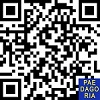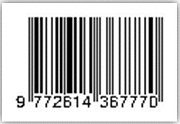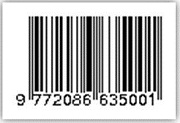PROFIL TOLERANSI MAHASISWA DI BANDUNG
Abstract
Abstrak: Penelitian ini bertujuan untuk mengeksplorasi profil toleransi pada mahasiswa di Bandung raya. Ruang lingkup penelitian ini mencakup konsep teori toleransi dan aspek toleransi. Metode yang digunakan ialah metode cross-sectional survey dengan pendekatan Kuantitatif. Populasi dalam penelitian ini ialah mahasiswa di fakultas keguruan dan ilmu pendidikan kampus-kampus swasta di Bandung raya. Pengambilan sampel penelitian menggunakan teknik random sampling. Adapun Sampel penelitian terdiri dari 846 mahasiswa. Pengumpulan data menggunakan instrumen toleransi. Analisis data yang digunakan dalam peneleitian ini yakni menggunakan statistik deskriptif. Hasil penelitian ini menunjukkan profil toleransi mahasiswa yang terbanyak berada kategori sedang berjumlah 599 orang atau sekitar 70,8%, kedua, mahasiswa yang memiliki profil toleransi kategori tinggi yakni berjumlah 137 orang atau sekitar 16,2%. Terakhir, mahasiswa yang memiliki profil toleransi kategori rendah yakni 110 responden atau 13%. Begitupun aspek toleransi yang terdiri dari aspek kognitif, afektif, dan psikomotor berada pada kategori sedang. Hasil penelitian ini dapat menjadi bahan dan pertimbangan bagi penelitian selanjutnya untuk menyusun model atau program layanan bimbingan dan konseling yang secara empirik digunakan untuk mengembangkan toleransi.
Abstract: This research aims to explore the tolerance profile of students in Greater Bandung. The scope of this research includes the concept of tolerance theory and aspects of tolerance. The method used is a cross-sectional survey method with a quantitative approach. The population in this study were students from teaching and education faculties at private campuses in Greater Bandung. Research samples were taken using random sampling techniques. The research sample consisted of 846 students. Data collection uses tolerance instruments. Data analysis used in this research uses descriptive statistics. The results of this research show that the highest tolerance profile of students is in the medium category, amounting to 599 people or around 70.8%, secondly, students who have a tolerance profile in the high category are 137 people or around 16.2%. Finally, students who had a low tolerance profile were 110 respondents or 13%. Likewise, the tolerance aspect consisting of cognitive, affective and psychomotor aspects is in the medium category. The results of this research can be used as material and consideration for further research to develop a guidance and counseling service model or program that can be used empirically to develop tolerance.Keywords
Full Text:
PDFReferences
Akhwani, . and Kurniawan, Moh Wahyu (2021) Potret Sikap Toleransi Mahasiswa Keguruan dalam Menyiapkan Generasi Rahmatan Lil Alamin. Edukatif: Jurnal Ilmu Pendidikan, 3 (3). pp. 890-899.
Allport, G. W. (1954). The Nature of Prejudice. Addison-Wesley Pub. Co.
Andrey A. Verbitsky, Irina F. Berezhnaya, Mariam D. Iliazova, A. R. A. (2019). Forein Students Education: Tolerance And Mosaicity Structure Of International Groups. The European Proceedings of Social & Behavioural Sciences EpSBS.
Balint, P. A. (2010). Avoiding an Intolerant Society : Why respect of difference may not be the best approach. Educational Philosophy and Theory, 42(1). https://doi.org/10.1111/j.1469-5812.2008.00470.x
Bosch, A. (2020). The Limits of Tolerance: Extreme Speakers on Campus. Social Problems, 042020, 39, 1–21 doi: 10.1093/socpro/spaa019
Butrus, N., & Witenberg, R. T. (2015). Some personality predictors of tolerance to human diversity: The roles of openness, agreeableness, and empathy. Australian Psychologist, 48, 290–298 (Published on line in 2013). https://doi.org/10.1111/j.17429544.2012.00081.x.
Chistolini, S. (2017). Education and the Paradigm of Tolerance. The European Journal of Educational Sciences, 04(01), 42–52. https://doi.org/10.19044/ejes.v4no1a42
Dulabaum, N. L. (2011). A Pedagogy for Global Understanding – intercultural dialogue : from theory to practice. Policy Futures in Education, 9(1), 104–108. https://doi.org/10.2304/pfie.2011.9.1.104
Galeotti, A. E. (2001). Do we need toleration as a moral virtue? Res Publica, 7, 273–292.
Galeotti, A. E. (2015). The range of toleration: From toleration as recognition back to disrespectful tolerance. Philosophy and Social Criticism, 41(2), 93–110. https://doi.org/10.1177/0191453714559424
Gallup. (2016). “Free Expression on Campus: A Survey of U.S. College Students and U.S. Adults.” https://knightfounda-tion.org/wp-content/uploads/2020/01/FreeSpeech_campus.pdf.
Golebiowska, Ewa. (1999). “Gender Gap in Political Tolerance.” Political Behavior 21(1):43–66.
Hermawati, R., Paskarina, C., & Runiawati, N. (2016). Toleransi Antar Umat Beragama di Kota Bandung. UMBARA : Indonesian Journal of Anthropology, 1((2)).
Hjerm, M., Eger, M. A., Bohman, A., & Fors, F. (2020). A New Approach to the Study of Tolerance : Conceptualizing and Measuring Acceptance , Respect , and Appreciation of Difference. Social Indicators Research, 147(3), 897–919. https://doi.org/10.1007/s11205-019-02176-y
Kamen, H. (1967). The Rise of Toleration. Weidenfeld & Nicolson.
Kartadinata, S. (2018). EDUCATION IN THE INDUSTRY 4.0 ERA: BUILDING A CULTURE OF PEACE. International Conference on Economics, Business, Entrepreneurship & Finance.
Koriakina, A. A. (2019). The Problem of Ethnic Tolerance Development among Students. Educational Process: International Journal, 8(1), 85–90. https://doi.org/10.22521/edupij.2019.81.6
Mirza, N. M. (2019). Talking about cultural diversity at school : dialogical tensions and obstacles to secondarisation. European Journal of Psychology of Education, November. https://doi.org/10.1007/s10212-019-00442-8
ÖZGEN, N. K. & N. (2018). Multiculturality Concept and Its Reflections on Education : The Case of Turkey. Review of International Geographical Education Online, 8(3).
Pasamonik, B. (2004). The paradoxes of tolerance. developing tolerant attitudes in students. Social Studies, 95, 206–210.
Pradythia Aurellai Nanlohy, Maslan Abdin & Sjafrudin Latar. (2023). ToleransiMahasiswa: Studi Kasus diPoliteknik Negeri Ambon. SCHOLARS: Jurnal Sosial Humaniora dan Pendidikan,Vol. 1 No. 1
Purgason, L. L., & Boyles, J. (2016). Teaching Technology and Tolerance in Tandem: Culturally Responsive Classroom Guidance Interventions Lucy L. Purgason, Jessica Boyles, and Cassidy Greene Appalachian State University. Departamento de Seguridad Nacional, 28.
Shaukat, S. & Pell W.A. (2020). Religious Tolerance of Madrasa Students according to Their Religious Affiliation: An Empirical Investigation. International Journal of Islam in Asia. Volume 1: Issue 1 https://doi.org/10.1163/25899996-01010005
Skitka, Linda, Christopher Bauman, and Elizabeth Mullen. (2004). “Political Tolerance and Coming to Psychological Closure following the September 11, 2001, Terrorist Attacks: An Integrative Approach.” Personality and Social Psychology Bulletin 30(6):743–756.
Safina, R. N., & Abdurakhmanov, M. A. (2016). The formation of students’ tolerance in a multi-ethnic school. International Journal of Environmental and Science Education, 11(3), 269–277. https://doi.org/10.12973/ijese.2016.310a
Septian, M. R., Supriatna, M., & Nurihsan, J. (2023). Contributive Factors of Tolerance among Senior High School Students. Jurnal Kajian Bimbingan dan Konseling, 8(1), 47–58. https://doi.org/10.17977/um001v8i12023p47-58
Septian, M. R., & Budiman, A. (2021). Tolerance in Madrasah Students Based on Religious Organization Affiliates. JOMSIGN: Journal of Multicultural Studies in Guidance and Counseling, 5(2), 43–61. https://doi.org/10.17509/jomsign.v5i2.35063
Sudirman, S. (2019). The 21st-Century Teacher: Teacher’s Competence Within the Character Education Framework Towards A Cultural-Oriented Development and Promoting Tolerance. International Education Studies, 12(8), 21. https://doi.org/10.5539/ies.v12n8p21
Sullivan, John, James Pierson, and George Marcus. (1993). Political Tolerance and American Democracy. Chicago, IL: University of Chicago Press.
Talib, A. T., & Gill, S. S. (2012). Socio-Religious Tolerance: Exploring the Malaysian Experience. Global Journal of Human Social Science, 12(8).
UNESCO. (1995). Declaration of Tolerance.
Parker, L. (2014). Religious education for peaceful coexistence in Indonesia? South East Asia Research, 22(4).
Plaut, V. C. (2010). Diversity science: Why and how difference makes a difference. Psychological Inquiry, 21(2), 77–99. https://doi.org/10.1080/10478401003676501
Shajhelislamov, R F., S. K. S. & S. J. N. (2014). Designing the individual educational path for professional development of teachers. Life Science Journal, 11.
Vogt, W. P. (1997). Tolerance and education: Learning to live with diversity and difference. Sage.
Verkuyten, M., Yogeeswaran, K., & Adelman, L. (2020). The Negative Implications of Being Tolerated : Tolerance From the Target ’ s Perspective. https://doi.org/10.1177/1745691619897974
Walzer, Michael. (1997). On Toleration Castle Lectures in Ethics, Politics, and Economics. Yale University Press.
Thomas Lickona, (1991). Educating for character: how our schools can teach respect and responsibility. New York: Bantam.
Verkuyten, M., (2022). The social psychology of tolerance. New York, NY: Routledge,
Vogt, W. P. (1997). Tolerance and education: Learning to live with diversity and difference. Sage.
Witenberg, R. (2019). The Psychology of Tolerance: Conception and Development. Melbourne: Springer.
DOI: https://doi.org/10.31764/paedagoria.v15i2.21194
Refbacks
- There are currently no refbacks.
Copyright (c) 2024 Muhammad Rezza Septian

This work is licensed under a Creative Commons Attribution-ShareAlike 4.0 International License.
Paedagoria : Jurnal Kajian, Penelitian dan Pengembangan Kependidikan
Fakultas Keguruan & Ilmu Pendidikan | Universitas Muhammadiyah Mataram.
_______________________________________________
 | Paedagoria : Jurnal Kajian, Penelitian dan Pengembangan Kependidikan |
______________________________________________
CURRENT INDEXING:
EDITORIAL OFFICE:


















